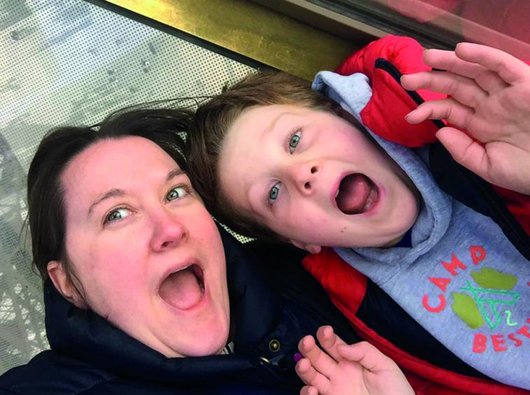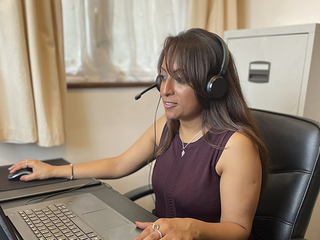Childhood leukaemia symptoms and tests
Your child may have a range of symptoms before they are diagnosed, and they will need tests to decide the right diagnosis.
Symptoms of childhood leukaemia
Symptoms are changes in the way someone feels. Because leukaemia is rare and the symptoms are common in other illnesses, it can sometimes take a while to diagnose.
If doctors think your child may have leukaemia, they’ll act quickly to arrange tests and treatment.
You child is unlikely to get all of the symptoms listed here – everyone is different. These are the most common ones.
Leukaemia can cause anaemia, which means a low number of red blood cells in the blood. Red blood cells carry oxygen around the body and if your child doesn’t have enough of them, they might have these symptoms:
- constant tiredness
- feeling out of breath (even when they’re not active)
- feeling dizzy
- paleness (in black and brown skin, this may be more easily seen in the lips, gums, tongue or nail beds, or inside the lower eyelid if you pull it down gently).
A low number of blood cells called platelets in the blood can mean children are more prone to bruising than usual, even if they don’t seem to have had any knock or bumps.
Your child may also have unusual bleeding or bleeding that takes longer to stop. They may get nosebleeds or bleeding gums.
They might develop a petechial rash. These are round red or purple spots that appear on the surface of the skin that don’t change colour when you press them. They are caused by bleeding under the skin. In black and brown skin, petechial rash may be more obvious on the soles of the feet, palms of the hand and inside the mouth.
A low number of white blood cells in the blood can lead to frequent infections and fever, even if there are no obvious signs like a sore throat or runny nose.
If your child has leukaemia, they may be more likely to develop infections, which can be more severe and last longer than usual.
Before they’re diagnosed, many children have had repeated infections or infections that don’t go away, and have often been given antibiotics.
Your hospital team will tell you what to look out for, so if your child develops an infection you can get help immediately.
Your child might lose weight because their metabolism (the rate at which we burn energy from food) speeds up. We don’t know why this happens.
Leukaemia can sometimes cause other symptoms because of the spread of leukaemia cells in the body.
- The lymph nodes in your child’s neck may swell, which will look and feel like swollen glands.
- Your child might feel some pain in the stomach area if their liver or spleen (part of the immune system) are swollen.
- They may complain of bone pain. This is caused by leukaemia cells overcrowding the bone marrow. Younger children might limp or avoid walking because of this.
- They may feel generally unwell.
- They may have night sweats.
"I wish it were me."
Mum Melody shares her thoughts in the week following Andrew's diagnosis at 3 years old.

Tests for childhood leukaemia
Your child will have tests to confirm whether they have leukaemia, and if they do, to find out more about what type it is.
Doctors will look at cells in your child’s blood and bone marrow and will look for changes in the genes in those cells. Genes provide a set of instructions for how individual cells behave.
If the tests show your child has leukaemia, doctors will carry out more tests. These will give more information about the leukaemia and help them decide on the best course of treatment.
At any time, you can ask your hospital team to tell you why your child is having a certain test and what the results mean.
Here are some common tests:
Your child will have many blood tests throughout their treatment so that doctors can monitor what’s happening in their blood.
When your child needs a blood test, a sample will be taken from a vein using a small needle. It may hurt a little when the needle goes in, but creams or sprays are used to numb the skin and it’s all over very quickly.
Sometimes blood samples are taken through a cannula - a needle with a thin tube attached that’s inserted into the back of a hand or in an arm.
If your child is in hospital, they will be offered a central venous line like a Hickman line, Portacath or PICC line. Blood samples may be taken from the central line. We have more information about central lines.
The blood samples are taken away and analysed in a laboratory.
You child will need these blood tests:
Full blood count
This measures the number of each type of cell in the blood: red cells, white cells and platelets. It also allows your child’s doctors to look for leukaemia cells in the blood.
Your child will have this test quite often and you might want to keep track of the results. Your child’s consultant or specialist nurse will be able to explain what the results mean.
Liver function test
This test checks how well your child’s liver is working. Many drugs are broken down in the liver, so if your child has chemotherapy they’ll have a series of these tests throughout their treatment. If their liver isn’t working normally, doctors might need to change the dose of a drug.
Urea and electrolytes test
This test looks at how well your child’s kidneys are working. The kidneys play an important role in dealing with drugs and getting rid of waste products from the body. They can be affected by leukaemia and the drugs used to treat it. This test looks at how well your child’s kidneys are working and can also show if your child is dehydrated and needs more fluid.
Doctors will take a sample of your child’s bone marrow and look at it under a microscope to see how the blood cells inside are working.
Your child will have this test a number of times throughout their treatment, to check how well the treatment is working.
Your child will have a small amount of bone marrow taken from the back of their pelvis (the ring of bone that that connects the body to the legs). The test is done using a special needle to remove what looks like thick blood. This is called bone marrow aspirate. At the same time a small core of more solid bone marrow may be taken through another needle. This is called a bone marrow trephine.
Taking bone marrow samples is usually quick but can be uncomfortable. Children and teenagers are normally given a general anaesthetic so they’ll sleep through the procedure.
You won’t get the results immediately – the samples need to be prepared and then examined under a microscope or passed through a machine called a flow cytometer.
Leukaemia involves changes in the genes of certain white blood cells.
The aim of genetic testing is to find the gene changes in the leukaemia cells that show the specific type of leukaemia your child has. This can help doctors decide which treatment will work best and have a better idea of your child’s outlook.
Genetic tests are usually done using leukaemia cells taken from a blood or bone marrow sample. The results of the tests will be sent back to your child’s consultant.
You may hear other names for this type of testing, including cytogenetic testing, molecular testing, karyotyping, chromosomal abnormality or FISH testing. These are all different methods used to perform the genetic testing.
An MRD test detects how many leukaemia cells are left in the bone marrow at the time of the test.
When your doctors look at blood cells through a microscope, they can only detect leukaemia if the level is as high as one leukaemia cell in every 20 normal cells. The MRD test is much more sensitive and can detect leukaemia at levels as low as one leukaemia cell in every 100,000 normal cells. The test is done using a sample form a bone marrow biopsy.
MRD and cytogenetic testing are very important indicators of how much treatment your child will need. These test results will decide which treatment programme (regimen) your child will be on.
A lumbar puncture involves taking a small sample of the fluid that surrounds the brain and spinal cord.
The aim is to check if there are any leukaemia cells in it, and also to give some chemotherapy into the fluid to prevent the leukaemia cells spreading there.
Your child will lie down in a curled position. The doctor will carefully insert a thin needle between the bones of the lower spine and take a few drops of cerebrospinal fluid (CSF) from the space around the spinal cord. Children are normally given a general anaesthetic so they’ll sleep through the procedure. Older children may choose to stay awake for the procedure but have a local anaesthetic to numb the area.
The CSF sample will then be sent to a laboratory for analysis and the results sent to your child’s consultant (specialist doctor). All children are checked and treated for leukaemia in the CSF.
Your child may have some scans during their treatment. These will help doctors to see how well the treatment is working and look for any complications caused by the leukaemia or the treatment.
During an x-ray you'll be able to stay with your child but for a CT or MRI scan, you won’t be in the room. Younger children will usually be able to see you through a window and you’ll be able to talk to them over an intercom. The radiographer (the person who takes and assesses the images) will speak to them as well.
Young children are often given a general anaesthetic so they sleep through a CT or MRI scan. Older children may have medicine to help them feel more relaxed.
Doctors will take care not to expose your child to radiation unless absolutely necessary.
X-rays
Your child’s doctors may order a chest x-ray when your child is first diagnosed, to check for infections or chest problems.
They may also use x-rays during your child’s treatment to monitor how well the treatment is working and to check for chest infections if your child’s white cell count is low.
CT scan
This is a type of x-ray that produces a detailed picture of the inside of the body. Your child will lie on a table that moves into a tunnel while the pictures are taken. It’s a painless procedure and their body isn’t completely enclosed at any time.
Your child may need to have some dye injected into a vein to help the computer create a better image.
The results can take some time to reach your healthcare team, so don’t worry if you don’t hear about them straight away.
MRI scan
This scan uses radio waves rather than x-rays and produces images that can be analysed on a computer. Your child will lie on a table which will move them through the scanner. It’s a painless procedure which can take up to an hour.
As with a CT scan, your child may need to have some dye injected into a vein to help the computer create a better image.

Worried about anything or have questions?
If you need someone to talk to, please don't hesitate to contact our Support Service by phone or email.
